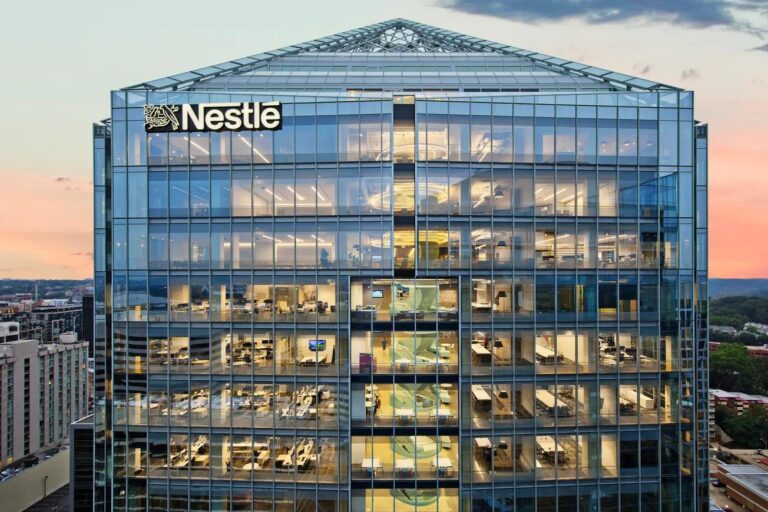Nestlé USA has announced that it will phase out the use of synthetic food colors in its products by mid-2026, marking a significant shift in the company’s approach to food ingredients. The decision, reported by Reuters, aligns with growing consumer demand for cleaner, more natural food options and reflects broader industry trends toward transparency and health-conscious product formulations. This move is expected to impact a wide range of Nestlé’s offerings across the United States, as the food giant transitions to natural color alternatives over the next few years.
Nestle USA Commits to Eliminating Synthetic Food Colors by Mid 2026
Nestle USA is taking a significant stride towards cleaner labeling and natural ingredients by announcing its plan to completely remove synthetic food colors from its product lineup by mid-2026. This commitment aims to address growing consumer demand for transparency and health-conscious choices, aligning the company’s extensive portfolio with modern food trends. The decision affects popular brands across beverages, snacks, and confectionery, signaling a major shift in ingredient sourcing and product formulation strategies.
Key aspects of Nestle USA’s initiative include:
- Transitioning to plant-based and naturally derived color alternatives
- Collaborating closely with suppliers to ensure sustainable sourcing
- Investing in research to maintain taste and appearance standards without synthetic additives
| Category | Impact | Timeline |
|---|---|---|
| Beverages | Reformulation with natural dyes | Q2 2024 – Q2 2026 |
| Snack Foods | Phase-out synthetic colorants | Q3 2024 – Q1 2026 |
| Confectionery | Introduce botanical colors | 2025 – Mid 2026 |
Health and Consumer Trends Driving Shift Away from Artificial Ingredients
Consumers are increasingly demanding transparency and cleaner labels in the food industry, fueling a marked departure from artificial additives. This heightened awareness around health and wellness is encouraging major corporations like Nestle USA to reevaluate their ingredient lists. The growing skepticism toward synthetic food colors is rooted in concerns over potential health risks and the rising preference for natural alternatives. As a result, brands are prioritizing products that align with consumer values on sustainability and well-being, driving innovation in natural food colorants derived from fruits, vegetables, and spices.
Key factors influencing this trend include:
- Boost in demand for organic and non-GMO certified foods
- Legislative pressure and stricter food safety regulations
- Consumer shifts toward plant-based and minimally processed products
- Influence of social media and wellness advocacy groups
| Year | % Reduction in Artificial Color Use | Number of Products Reformulated |
|---|---|---|
| 2023 | 20% | 150 |
| 2024 | 45% | 320 |
| 2025 | 70% | 480 |
| Mid-2026 Target | 100% | 650 |
Impact on Product Formulation and Supply Chain Adjustments
Nestlé USA’s commitment to eliminate synthetic food colors by mid-2026 represents a significant shift in product formulation, requiring extensive research and development efforts. The company is prioritizing natural color alternatives derived from fruits, vegetables, and spices to maintain the visual appeal of their products without compromising taste or shelf life. This transition challenges formulators to preserve product consistency and consumer expectations, as natural colorants often exhibit variability due to seasonal and sourcing factors.
On the supply chain front, Nestlé must recalibrate its procurement and logistics strategies to accommodate the new ingredients. Key adjustments include:
- Securing reliable suppliers for natural dyes to ensure uninterrupted production
- Enhancing quality control processes specific to natural ingredient variability
- Collaborating closely with farmers to support sustainable sourcing initiatives
- Investing in supply chain transparency technologies to track ingredient origins and compliance
| Aspect | Pre-2026 | Post-2026 |
|---|---|---|
| Colorant Source | Synthetic dyes | Natural extracts |
| Supply Chain Complexity | Low | Medium to High |
| Quality Monitoring | Standardized | Enhanced & Seasonal |
| Cost Impact | Stable | Potentially Higher |
Recommendations for Industry Players to Adapt to Changing Regulatory and Consumer Demands
Industry stakeholders must prioritize transparency and proactive communication to align with evolving consumer expectations and regulatory frameworks. Emphasizing clean label initiatives, brands can invest in natural and plant-based color alternatives, enhancing product appeal while ensuring compliance. Collaboration with suppliers and research institutions to innovate stable, cost-effective natural colorants will be crucial for a smooth transition away from synthetic additives.
Adapting operational and supply chain models is equally vital. The following strategies can serve as a blueprint for companies looking to navigate this shift effectively:
- Implement R&D investments focused on scalable natural ingredient sourcing.
- Engage cross-functional teams including marketing, compliance, and product development to align goals.
- Leverage consumer insights to ensure new product formulations meet taste and appearance expectations.
- Develop robust quality control systems to monitor changes in ingredient performance.
| Challenge | Recommended Action | Potential Impact |
|---|---|---|
| Ingredient Stability | Invest in R&D for natural alternatives | Improved product shelf-life |
| Cost Management | Optimize supply chain partnerships | Reduced production expenses |
| Consumer Trust | Transparent labeling & communication | Enhanced brand loyalty |
To Wrap It Up
Nestlé USA’s commitment to eliminating synthetic food colors by mid-2026 marks a significant shift in the industry’s approach to ingredient transparency and consumer health concerns. As one of the nation’s largest food manufacturers, the company’s move may set a precedent for others to follow suit, reflecting growing demand for more natural products. Observers will be watching closely to see how this transition impacts product formulations, consumer acceptance, and the broader market landscape in the coming years.




